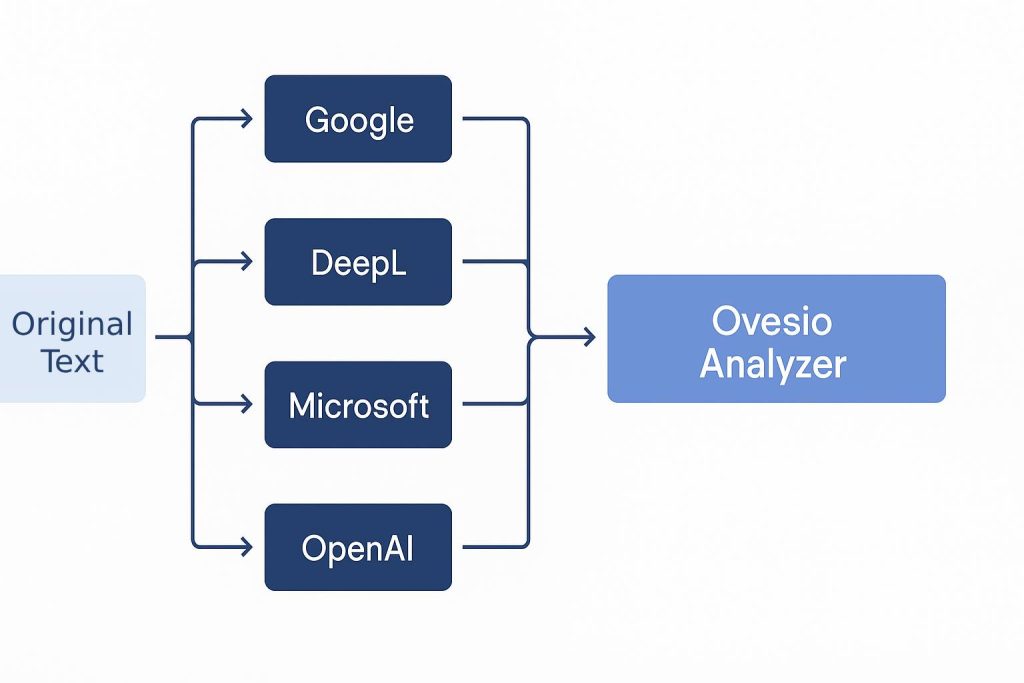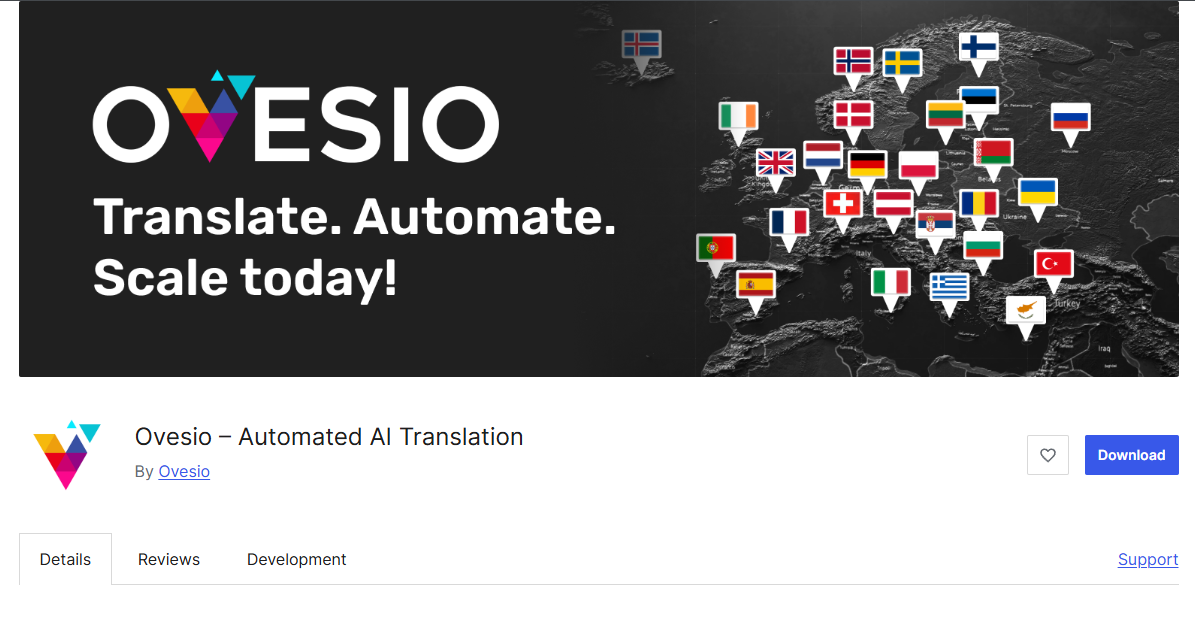How Ovesio Chooses the Best Translation: Google, DeepL, OpenAI, and Beyond

When creating content for a global audience, one of the biggest challenges is finding a translation tool that delivers not just literal accuracy, but also tone, clarity, and consistency. Most solutions rely on a single translation engine. Ovesio works differently.
Ovesio was designed with one goal in mind: to help users translate smarter by comparing and evaluating the results of several major AI-based translation engines, including Google Translate, DeepL, Microsoft Translator, and OpenAI. Instead of forcing you to choose one, Ovesio selects the best version automatically using its own logic system.
Why One Engine Isn’t Enough
Each translation engine has its own strengths. DeepL is known for its fluency in European languages. Google Translate handles a wide range of language pairs with excellent speed. OpenAI produces more natural and context-aware phrasing. But no single provider performs equally well across all situations.
Most tools pick one engine and stick with it. The result is often rigid or awkward phrasing, especially when translating marketing text, technical specifications, or content where tone matters. Ovesio avoids this limitation by analyzing each version of the translation and selecting the most accurate and natural result.

How Ovesio Makes Its Choice
When a translation request is made, Ovesio sends the text to multiple engines at the same time. It then analyzes the returned translations, checking for language fluency, completeness, and alignment with the original message. Based on this, it returns the most appropriate version.
An upcoming feature will allow users to manually choose their preferred translation from the available options, for even more control.
This system is particularly effective when translating structured data such as product specifications and attributes. Unlike other platforms, Ovesio applies a contextual matching mechanism, which helps maintain consistency across similar entries and avoids misinterpretation of short, technical phrases.
Smart Reuse of Translations
Another powerful feature of Ovesio is its ability to save previously translated segments as predefined translations. For example, if a certain product attribute like “Screen Size” or “Battery Life” has already been translated into another language, Ovesio will reuse that exact translation rather than sending it again to the AI engines.
This provides two major benefits:
- It ensures consistent translations across your site or catalog
- It helps you save credits by not charging for texts that have already been translated and haven’t changed
If you submit the same article or product for translation multiple times without making changes, Ovesio detects that the content hasn’t been modified and won’t charge again for it.
Projects and Workflows: Managing Translation at Scale
To support complex translation needs, Ovesio offers two complementary tools: projects and workflows.
Projects are used to organize content separately when working with multiple websites or teams. For example, if you’re managing translations for several e-commerce platforms or microsites, you can group their content into distinct projects. This makes it easier to track progress, usage, and statistics per site or client, while keeping data isolated and organized.
Workflows, on the other hand, define how translation should be handled. In a workflow, you can specify:
- Which translation engines to use and in what order
- Whether to clean the HTML input from unwanted tags like
class="",style="", or<style>...</style> - If a default callback should be triggered when a translation is completed
This gives you control over both the quality of the output and the automation of the process. For example, a technical blog might use a workflow that prioritizes DeepL and OpenAI, while an e-commerce catalog might focus on reuse of predefined product attributes and clean HTML output.
By setting up reusable workflows, teams can save time, reduce errors, and adapt Ovesio to different types of content automatically, without redefining rules every time..
Designed for Clarity and Control
Transparency is another strength of the platform. For users who want to understand how translations are handled, Ovesio offers access to a comparison view that shows how each engine interpreted the text. This helps build trust in the process and is particularly useful for content editors or teams working in regulated industries.
Whether you’re working with long-form blog posts or product feeds with hundreds of attributes, Ovesio adapts to the structure and tone of your content. The focus is not only on getting the words right, but on preserving the meaning.
Conclusion
Ovesio stands out by combining the intelligence of multiple AI engines with its own decision-making system, optimized for clarity, consistency, and speed. It’s particularly effective for translating technical product data thanks to its context engine, predefined translations, and smart workflows that eliminate repetitive work.
If you manage multilingual content and want to avoid the limitations of one-size-fits-all translation tools, Ovesio offers a more flexible, accurate, and efficient solution.





